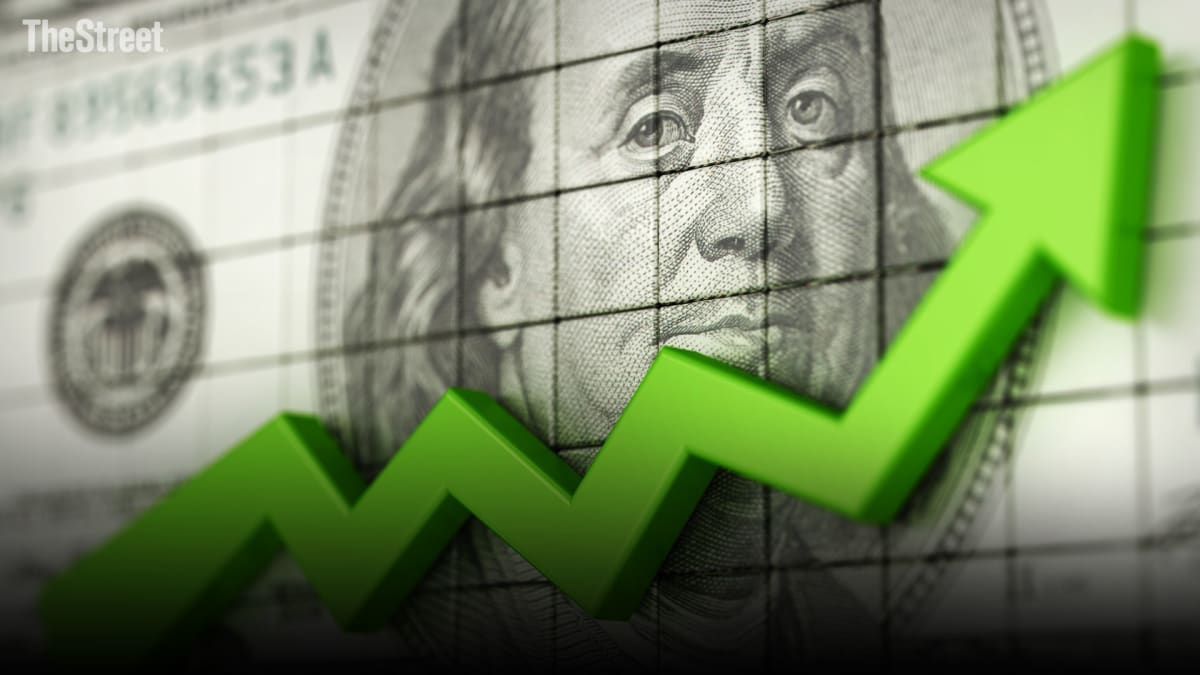
The Federal Reserve's preferred measure of U.S. inflation slowed notably in February, data indicated Friday, sending stocks higher as investors bet that fading consumer price pressures will alter the central bank's rate hike path.
The February core PCE Price Index rose 4.6% from last year, down from the 4.7% pace recorded in January and coming in lower than consensus Street forecast of 4.7%. The core index was up 0.3% on the month, the Bureau of Economic Analysis reported, down from last month's 0.5% tally (which was revised lower) and Street forecasts of 0.3%.
The headline PCE index rose 0.3% on the month and eased to 5% on the year, with both readings falling below analysts forecasts. Personal incomes rose by 0.3% while real personal spending rose 0.2%, the BEA noted, a bit firm than Street forecasts.
The data essentially echo figures from the Bureau of Labor Statistics earlier this month that showed inflation in February eased for a seventh consecutive month. The headline CPI reading slipped to 6.0%, although the core inflation rate bumped 0.5% on the month and 5.5% on the year.
"Fed officials have been very clear that they want to see a run of smaller increases before they’ll be convinced that inflation is on its way back to the target," said Ian Shepherdson of Pantheon Macroeconomics. "But the February numbers offer some hope, at the very least, especially in the core services ex-rent component, which the Fed has emphasized in recent months."
"The 0.27% increase in February was best since an out-of-the-blue dip in July last year, and our chart suggests that the trend is slowing," he added. "The March report, due just a few days before the May FOMC meeting, is now a hugely important release."
U.S. stocks turned higher following the data release. The Dow Jones Industrial Average rose 0.8% in mid-afternoon trading, on pace for its best weekly gain since November. The S&P 500 gained 0.9%.
Betting on the Direction of Rates
The CME Group's FedWatch tool is now showing a 51.2% chance of a 25 basis point rate hike from the Fed next month in Washington, down from 55% prior to the inflation data. That would take the federal funds rate to a range of 5% to 5.25%, with the bulk of bets pointing to a hold on rates in June and possibly a rate cut in July.
FedWatch suggests a 71% chance that the federal funds rate will either remain at its current level of 4.75% to 5%, or fall to between 4.5% and 4.75%.
Jeffrey Roach, chief economist for LPL Financial in Charlotte, North Carolina, however, thinks those betting on rate cuts will need to be a bit more patient.
"The inflation trend looks promising for investors. Inflation will likely be below 4% by the end of the year, giving the Federal Reserve some leeway to cut rates by the end of the year if the economy falls into recession," he said.
Much will depend, of course, on developments in the U.S. banking sector, which was rattled earlier this month by the failure of Silicon Valley Bank and the closure of Signature Bank.
The Fed boosted lending from its new backstop program designed to enhance liquidity at regional lenders last week, but overall support levels eased as the balance sheet stresses at smaller banks look to have stabilized.
Lending by the Fed's new Bank Term Funding Program rose by $10.7 billion to $64.4 billion over the week ending on March 29, according to Fed data published late Thursday, while lending at its main discount window slipped by $22 billion to $88.2 billion. So-called 'other credit' lending, which is tied to FDIC support for failed lenders, was steady at $180.1 billion.
The Fed's overall balance sheet, meanwhile, fell for the first time in four weeks, with the overall tally pegged at $8.756 trillion, compared to $8.784 trillion over the prior period.
During a question-and-answer session with the media last week in Washington, Fed Chairman Jerome Powell suggested tighter credit conditions linked to the bank crisis could result in "the equivalent of a rate hike or perhaps more than that" even as he stressed that "it's not possible to make that assessment today with any precision whatsoever."
Data from Bank of America, in fact, indicate tighter lending standards reduce consumer-loan growth around 10% over a three-year period but begin to appear within two to three quarters of their implementation.







